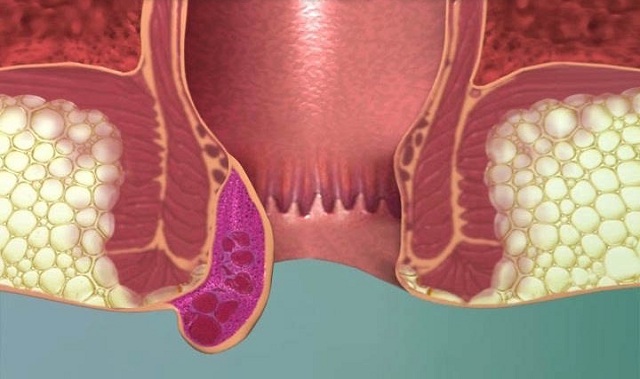Treatment of hemorrhoids

How Do I Know if I Have Hemorrhoids?
First, your health care provider will look at your anal area, perhaps by inserting a lubricated gloved finger or an anoscope (a hollow, lighted tube for viewing the lower few inches of the rectum) or a proctoscope (which works like an anoscope, but provides a more thorough rectal exam).
More procedures may be needed to identify internal hemorrhoids or rule out other ailments that frequently cause anal bleeding, such as anal fissure, colitis, Crohn's disease, and colorectal cancer.
To see further into the anal canal (into the lower colon, or sigmoid), sigmoidoscopy may be used, or the entire colon may be viewed with colonoscopy. For both procedures, a lighted, flexible viewing tube is inserted into the rectum. A barium X-ray can also show the outline of the entire colon's interior. First a barium enema is given, then X-rays are taken of the lower gastrointestinal tract.
What Are the Treatments for Hemorrhoids?
Once you develop hemorrhoids, they don't usually go away completely unless you undergo one of the procedures below. They can get better, however, so that living with them is tolerable. Both conventional and alternative practitioners consider diet the best treatment for hemorrhoids. A diet rich in high-fiber foods and low in processed foods is essential. Increasing fluid intake to six to eight eight-ounce glasses a day also is important. Check with your health care provider about your fluid needs if you have any medical problems or take medication. Dietary changes will be needed even if medication or surgery is prescribed.
Most hemorrhoid treatments aim to minimize pain and itching. Warm (but not hot) sitz baths are the most time-honored and suggested therapy: Sit in about three inches of warm water for 15 minutes, several times a day, especially after a bowel movement. This helps reduce the swelling in the area and relaxes spasm of the sphincter muscle. If you are pregnant, discuss any treatment, including dietary changes, with your health care provider before proceeding.
If you have been diagnosed with hemorrhoids, a high-fiber diet combined with sitz baths and Tylenol as prescribed often reduces discomfort within two weeks. If symptoms persist or are severe your health care provider may suggest one of the following procedures. Many can be performed in your doctor's office.
- Injection. An internal hemorrhoid can be injected with a solution which creates a scar and closes off the hemorrhoid. The injection hurts only a little, as any injection does.
- Banding. Prolapsed hemorrhoids are often removed using rubber-band ligation. A special tool secures a tiny rubber band around the hemorrhoid, shutting off its blood supply almost instantly. Within a week, the hemorrhoid shrivels and falls off.
- Coagulation or cauterization. Using either an electric probe, a laser beam, or an infrared light, a tiny burn painlessly seals the end of the hemorrhoid, causing it to close off and shrink. This is most useful for prolapsed hemorrhoids.
- Surgery. For large internal hemorrhoids or extremely uncomfortable external hemorrhoids (such as thrombosed hemorrhoids that are too painful to live with), your doctor may elect traditional surgery, called hemorrhoidectomy.
Hemorrhoid removal treatments are very effective, but unless dietary and lifestyle changes are made, hemorrhoids may recur.
No comments:
Post a Comment